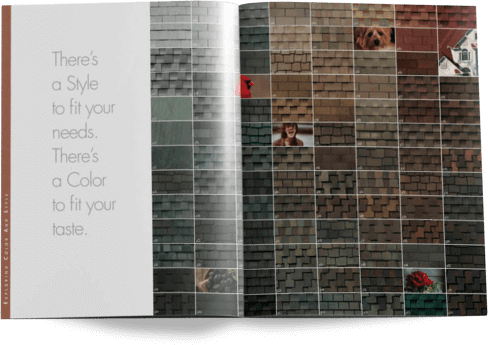Winter Roof Preparation: Common Mistakes to Avoid
As winter approaches, ensuring your roof is ready to withstand harsh weather conditions is crucial for protecting your home and avoiding costly repairs. However, many homeowners make mistakes when preparing their roofs for winter, often leading to unnecessary damage and expenses. By understanding these common pitfalls and how to avoid them, you can safeguard your home and enjoy a worry-free winter season.
Neglecting to Clean Gutters and Downspouts
One of the most common mistakes homeowners make is forgetting to clean their gutters and downspouts. Clogged gutters prevent proper water drainage, causing water to back up onto the roof. This can lead to ice dams, which occur when water freezes and causes damage to shingles, flashing, and the roof deck.
How to Avoid: Clean your gutters and downspouts regularly during the fall and early winter. Remove leaves, twigs, and other debris to ensure proper water flow. Installing gutter guards can also reduce the frequency of cleaning.
Ignoring Small Roof Repairs
Minor issues such as loose or missing shingles, small leaks, or cracked flashing may seem insignificant, but they can worsen under the weight of snow and ice. Ignoring these problems can lead to more extensive damage, including structural issues.
How to Avoid: Schedule a professional roof inspection before winter to identify and address any small repairs. Fixing minor issues early can save you from major headaches later.
Failing to Check Attic Insulation and Ventilation
Proper attic insulation and ventilation play a critical role in maintaining your roof’s health during winter. Inadequate insulation can cause heat to escape, leading to uneven roof temperatures and the formation of ice dams. Poor ventilation traps moisture, which can lead to mold and rot.
How to Avoid: Ensure your attic is well-insulated to prevent heat loss. Check for proper ventilation to allow moisture to escape. Consider consulting a professional to assess your attic’s insulation and ventilation systems.
Overloading the Roof with Decorations
Holiday decorations, such as lights and ornaments, can add charm to your home, but improper installation can cause roof damage. Heavy decorations or those that require nails and staples can compromise shingles and other roofing materials.
How to Avoid: Use lightweight decorations and avoid attaching them directly to the roof. Instead, secure decorations to gutters or eaves using clips designed for that purpose.
Walking on the Roof
Some homeowners attempt to inspect or clean their roofs themselves by walking on them, especially after a snowfall. This can damage shingles and increase the risk of slipping and falling.
How to Avoid: Leave roof inspections and maintenance to professionals with the proper equipment and expertise. If you must access the roof, use a stable ladder and take extreme caution.
Delaying Snow Removal
Allowing heavy snow to accumulate on your roof can lead to excessive weight, putting stress on the structure and increasing the risk of collapse. It can also contribute to ice dam formation and water leaks.
How to Avoid: Remove snow from your roof as soon as it reaches a significant depth (typically 6 inches or more). Use a roof rake with a long handle to clear snow safely from the ground. Avoid using sharp tools that could damage shingles.
Overlooking the Importance of Ice and Water Shields
Ice and water shields are essential for protecting vulnerable areas of your roof, such as valleys, eaves, and around chimneys, from water intrusion. Skipping this step during roof installation or repair can leave your home susceptible to leaks.
How to Avoid: If your roof lacks ice and water shields, consider adding them during your next roofing project. Consult a professional to determine the best approach for your specific roof.
Not Trimming Overhanging Branches
Overhanging tree branches can pose a significant risk to your roof during winter storms. Snow and ice can cause branches to break and fall, potentially damaging your roof and gutters.
How to Avoid: Trim back any branches that hang over your roof before winter arrives. This reduces the risk of damage and prevents leaves from clogging gutters.
Using Rock Salt or Harsh Chemicals
While it may seem like a quick fix, applying rock salt or harsh chemicals to your roof to melt ice can damage shingles and other roofing materials. These substances can also harm nearby landscaping and runoff areas.
How to Avoid: Use roof-safe ice melt products designed specifically for this purpose. Look for products labeled as safe for shingles and vegetation.
Skipping Professional Inspections
Some homeowners skip a professional roof inspection, thinking they can identify and address issues themselves. However, trained professionals can spot subtle problems that an untrained eye might miss.
How to Avoid: Schedule a professional roof inspection before the first snowfall. Regular inspections ensure that your roof is ready to handle winter’s challenges and gives you peace of mind.
Conclusion
Winter roof preparation is essential for protecting your home and avoiding costly repairs. By addressing common mistakes such as neglecting gutter cleaning, ignoring small repairs, and overlooking attic insulation, you can ensure your roof is ready to handle harsh weather conditions. Take proactive steps and consult professionals when necessary to safeguard your home and enjoy a worry-free winter.







